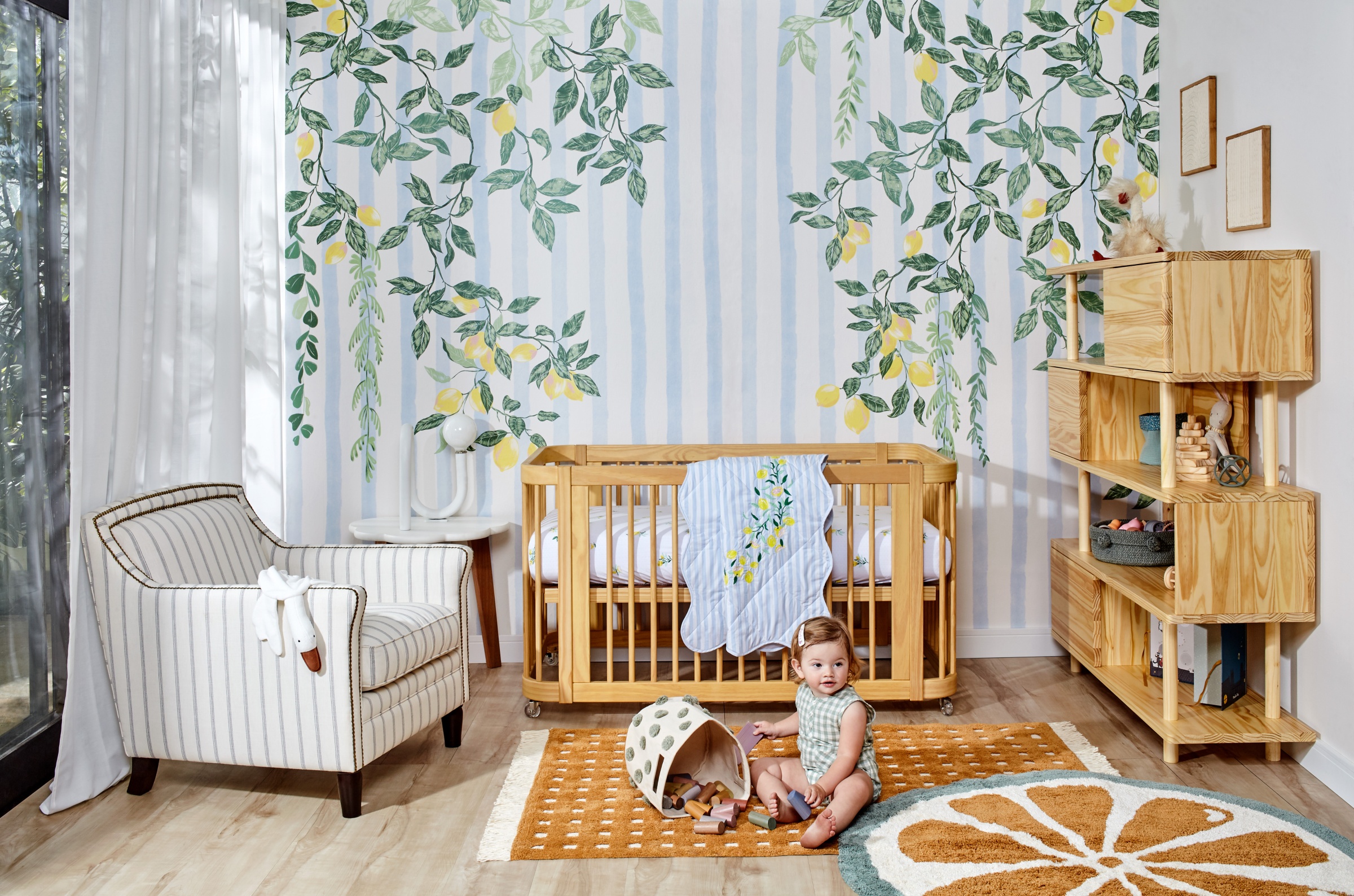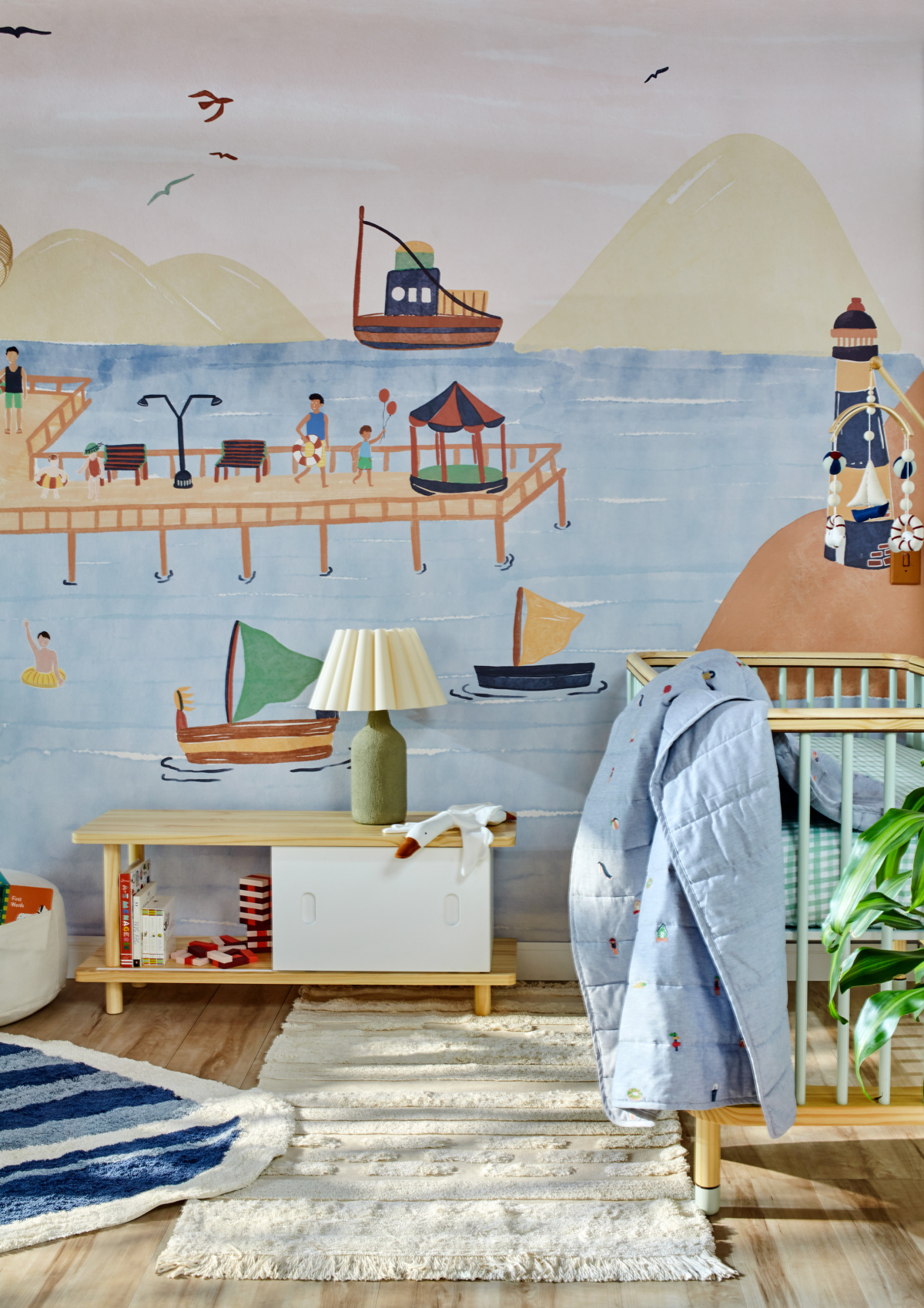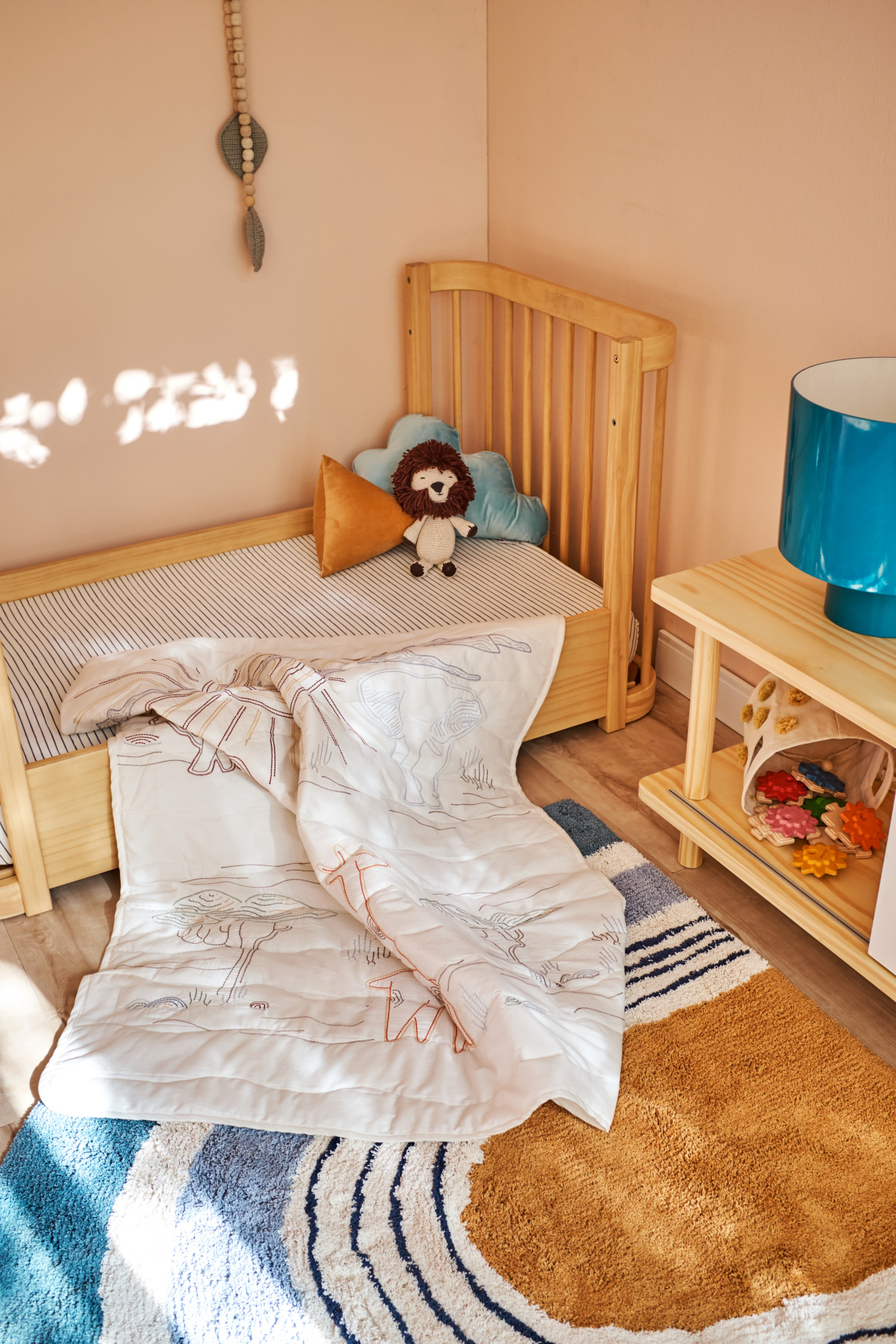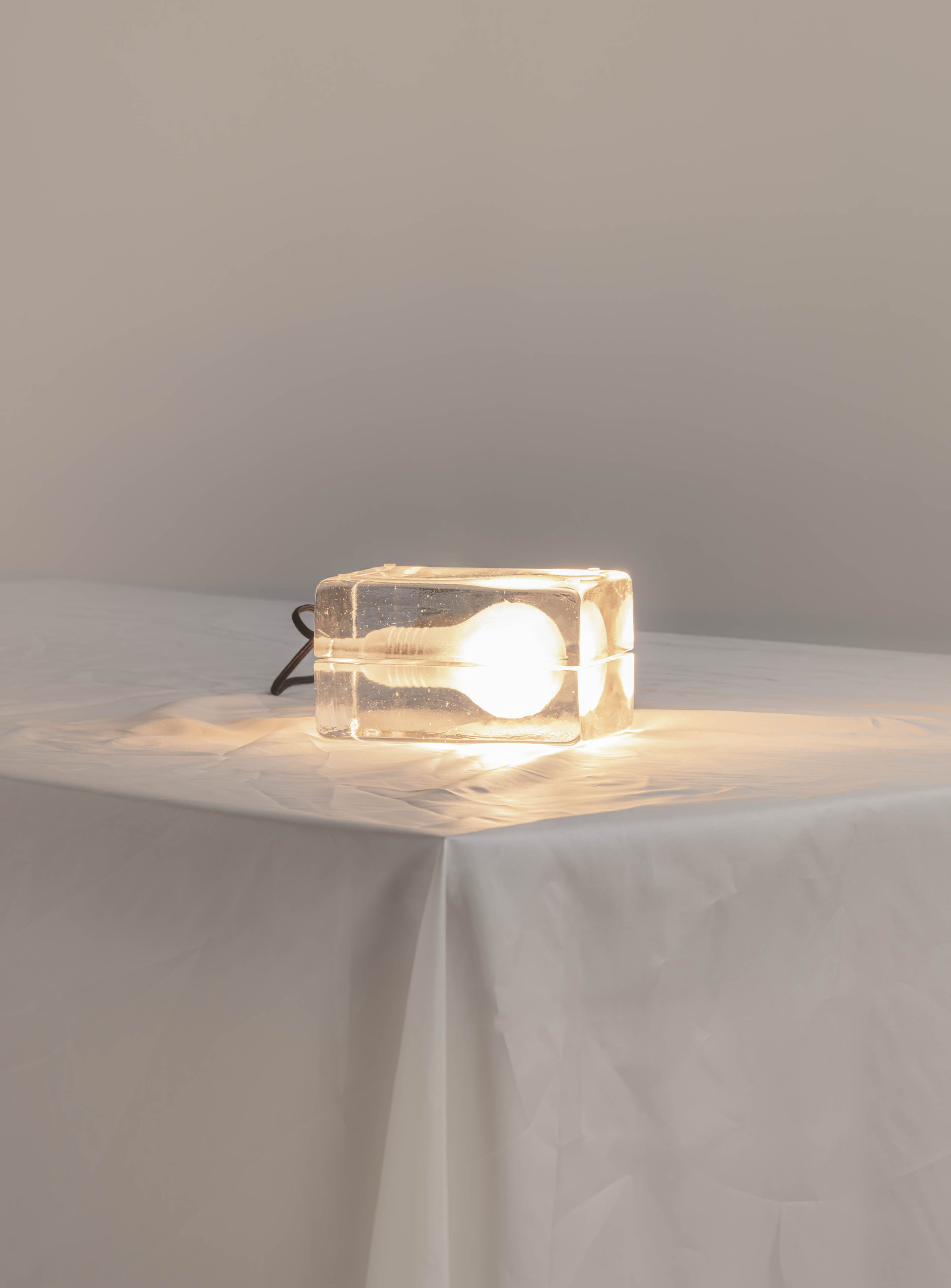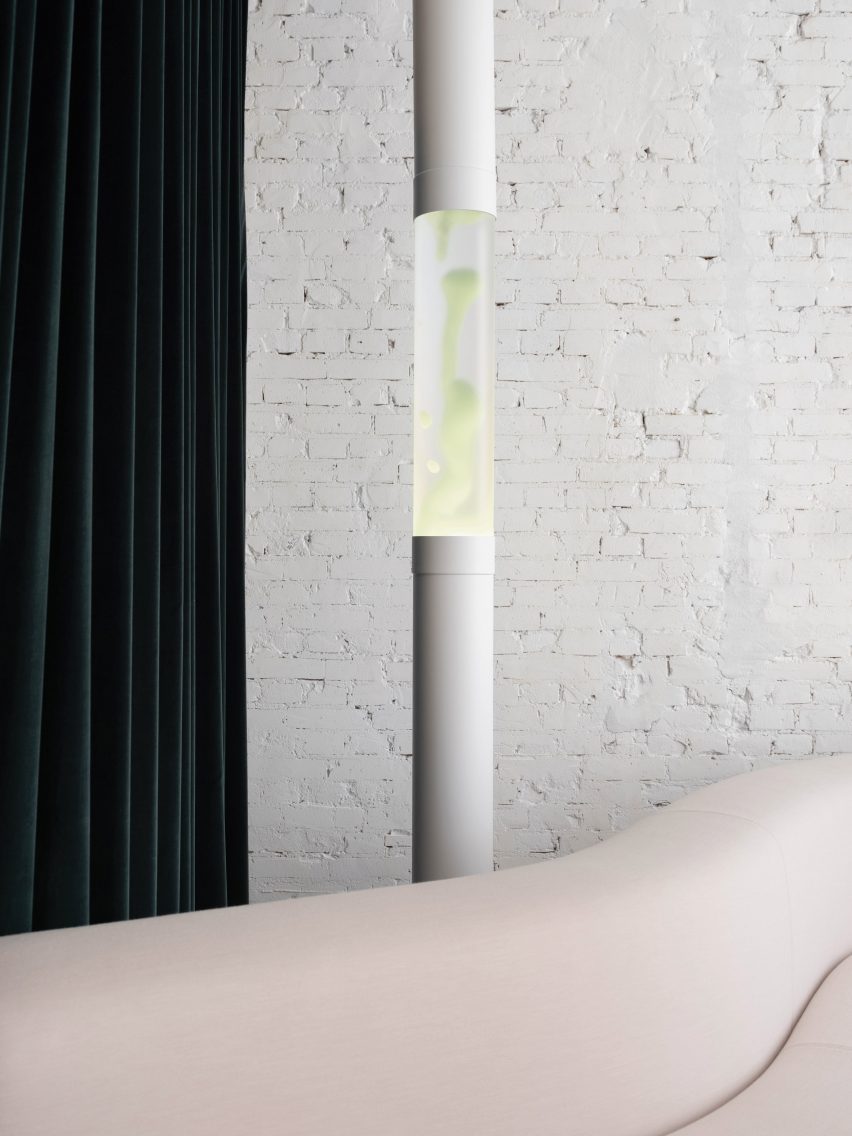Shopping for a new baby has, historically, been a balancing act between form, function, and safety—with form often falling quickly to the wayside. A bleary-eyed soon-to-be parent searching desperately for a crib online at 2am, faced with a cacophony of bright plastic and batteries, ends up thinking less about style or how sustainably it was made and more about whether baby will actually sleep in it, safely, for several years.
But with baby items taking up such a prominent space in the home these days (inevitably taking over nearly every room in the house), their aesthetic can have a big impact on the experience of parenting, especially for families who care deeply about choosing design-forward, intentionally sourced furniture and décor.
One new company, aptly named Nestig, has set out to change all that and, just turning three in August 2023, is already transforming the baby gear market. “Our cofounders really felt like there was a lack of beautiful, design-forward kids’ furniture and décor. And a lack of a rich, fulfilling shopping experience,” says Stephanie Dixon, head of brand marketing at Nestig.
Nestig was founded by Brazilian native and former venture investor Gui Picciotto and Sara Adam Slywka, formerly in marketing for Amazon, after meeting in Columbia University’s MBA program. Nestig’s mission is to do more than simply create more stuff to fill a home; it aims to bring wonder, delight, and imagination back to the baby shopping experience—with a loving eye on both sustainability and timelessness.
Gui strongly believed working with small, family-owned businesses in his home country was key—a selling point and personal value that would help the fledgling Nestig stand out in a market flooded with all-things cheap and loud. “He’s well aware of the very rich history of high-quality manufacturing and artisan craftsmanship in Brazil. And we really wanted to be able to bring that to the US market,” Stephanie says.
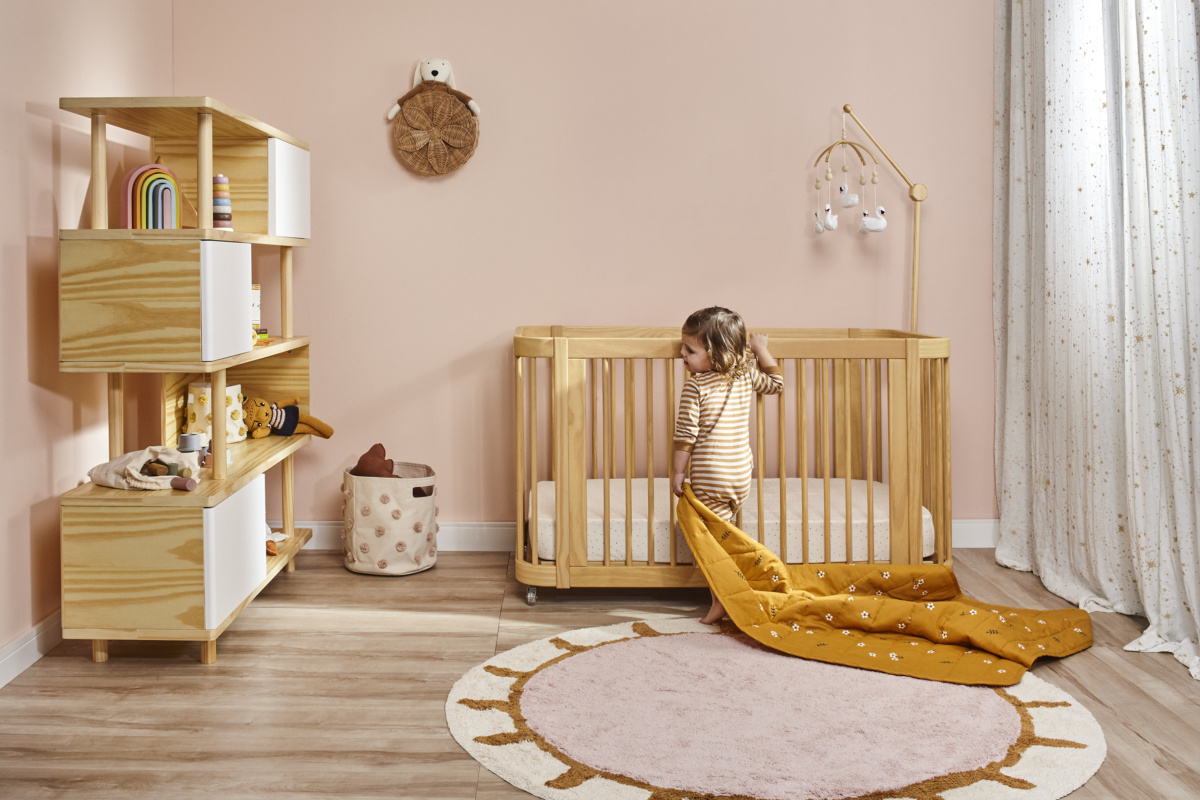
The Wave crib in natural wood
Considering Sara’s time in marketing at the world’s largest online retailer, she has intimate knowledge of how to offer parents a unique shopping experience. Stephanie describes her partnership with Gui as one of mutual values and a keen interest in the unique, modern parenting experience. “They met and really united over this lack of a lovely experience when it comes to shopping for things for your kids’ room. The US market is so dominated by big-box retailers that don’t always provide the most thrilling design options; also the experience is kind of stale. There’s not a lot of freshness. Not a lot of childlike wonder that, especially for first-time parents, we felt we could tap into.”
So they started with one of the biggest and possibly most important nursery choices parents make—the crib. At its most basic, a crib is a place for a baby to sleep safely and, ideally, soundly. But as the crib will undoubtedly be central to a nursery’s look and feel, Nestig’s founders knew both its design and materials needed to be of the highest quality to fit their ethos.
And it all started with who, where, and how the crib itself would be built. “Nestig is a values-based company. One of the values is ‘made with kindness.’ And out of that stems all of these other things: ethical production, sustainable production—it’s kindness in everything we touch,” Stephanie says. “We knew the American market really cares about that, especially younger generations.”
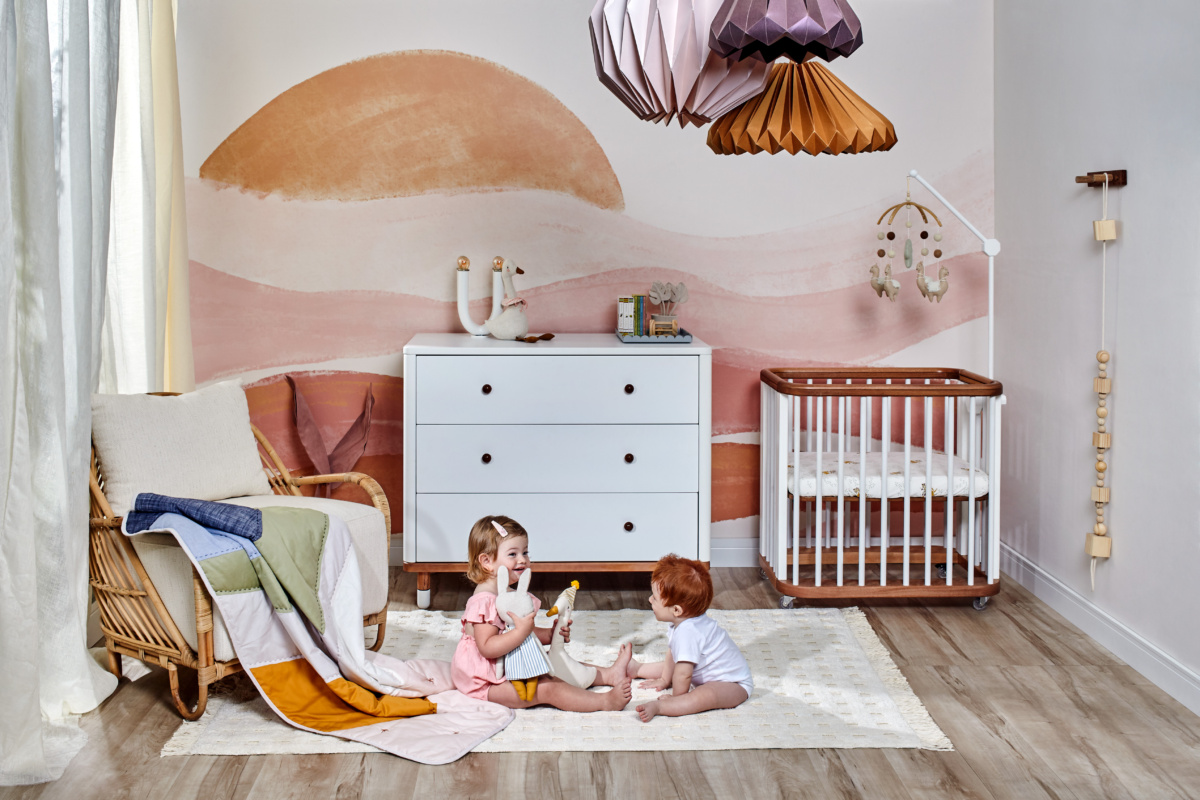
The Cloud crib in white
Stephanie says it was a “no-brainer” the type of companies they would choose to work with for their materials and manufacturing. “We primarily work with family-run, small manufacturers in Brazil where we know everyone by name. I’ve visited them myself, and it’s really putting our money where our mouth is. You can really tell that the people creating these items are treated with kindness, that these are places people are happy to be working and using their skills to do something meaningful.”
When it came to choosing and sourcing materials, Brazil’s stressed natural landscapes were also top of mind. “We knew we wanted to use wood from reforested lands. This is a huge issue in Brazil.” That’s why, Dixon says, they chose manufacturers who make sustainability a priority, who aren’t afraid to “slow down, take more time and overall create a better-quality product.”
That product, the first Nestig crib to be developed, today comes in two versions—the Cloud and the Wave. Both are breathtakingly simple in design, with clean lines, built of woods that appear both solid and soft at the same time. The cribs are unmistakably intended for baby’s comfort and safety, yet their forms appear so timeless and universal they could easily slip into a maximalist penthouse in Manhattan or a midcentury modern villa in Tuscany.
- Cloud (above) and Wave (right) cribs.
Both bestselling cribs come in a variety of finishes, and both grow and change with baby, extending from a mini crib for newborns to a full crib ideal for older babies to a sturdy toddler bed. While the Cloud has a slightly different look, offering short safety rails in its toddler formation, the Wave is even simpler in design and includes wheels so baby can easily be moved around the house, with a bed that lowers completely to the floor in its toddler form.
The Nestig cribs meet or exceed the highest safety standards, using nontoxic dyes and finishes, breathable mattresses, and organic fabrics. Everything is extensively tested. And if a potential customer has a question about safety, Nestig’s staff isn’t afraid to show their work, personally sending things like VOC testing reports whenever possible. “It’s always great to be able to give parents real answers,” Stephanie says. “A lot of companies make these claims, but they can’t back them up. We really try to show the customer we’re not just saying these buzzwords. We really do mean it. It’s something we’re invested in as a company.”
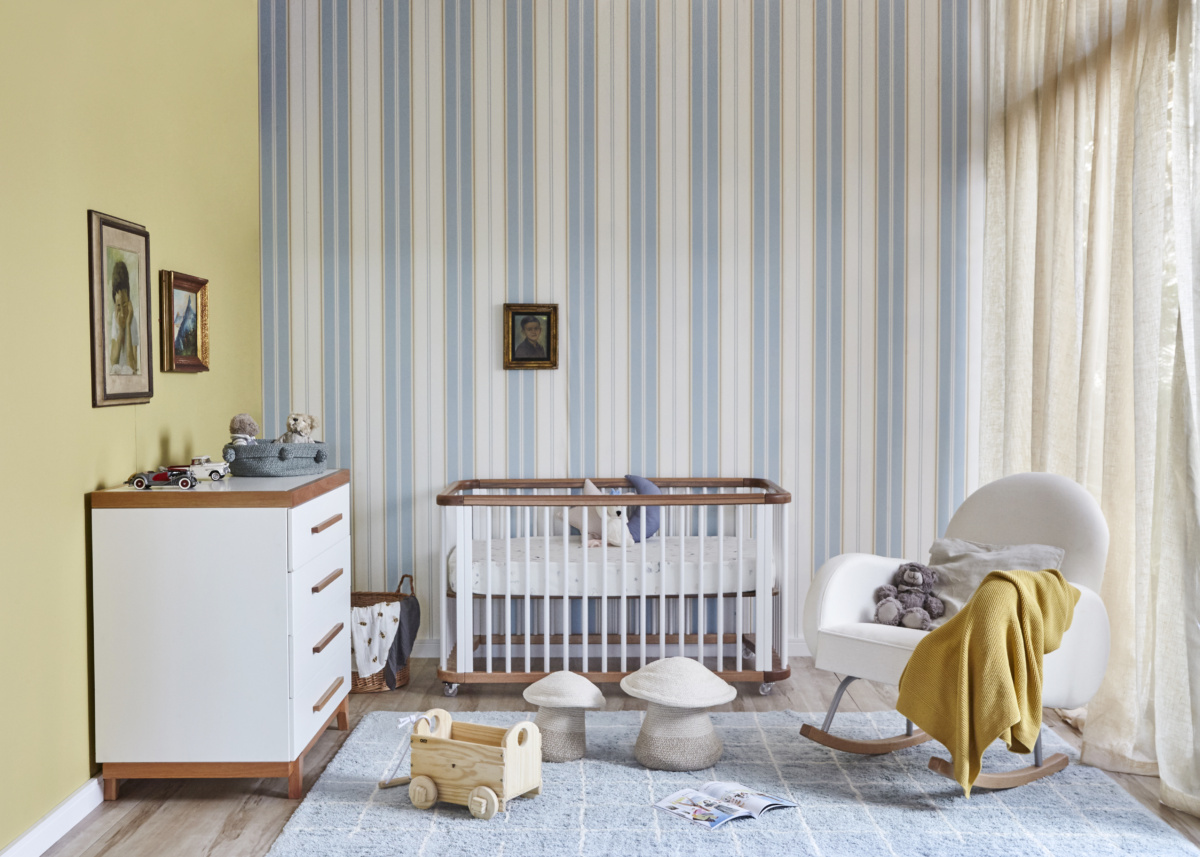
Maria Pessoa, head of product development at Nestig, says they create their products with love. “This comes in different forms—from creating delightful details that spark magic to selecting partners that deeply care to make a difference in their community.”
Maria says they begin the development process by choosing the perfect suppliers. “We have high standards for natural materials, quality, and skills that fit the Nestig way.” For her it’s all about the company’s devotion to babies and parents. “Our love for babies and their safety drives every action we take. Our eye for design and beauty will always start with safe materials and construction. All Nestig products undergo mandatory and voluntary testing and certifications [like Juvenile Products Manufacturers Association and Global Organic Textile standards]. Our partners also play an important part in this process, and we work closely—literally, as they are all local and we make regular visits to the factories—to achieve such top-tier safety standards.”
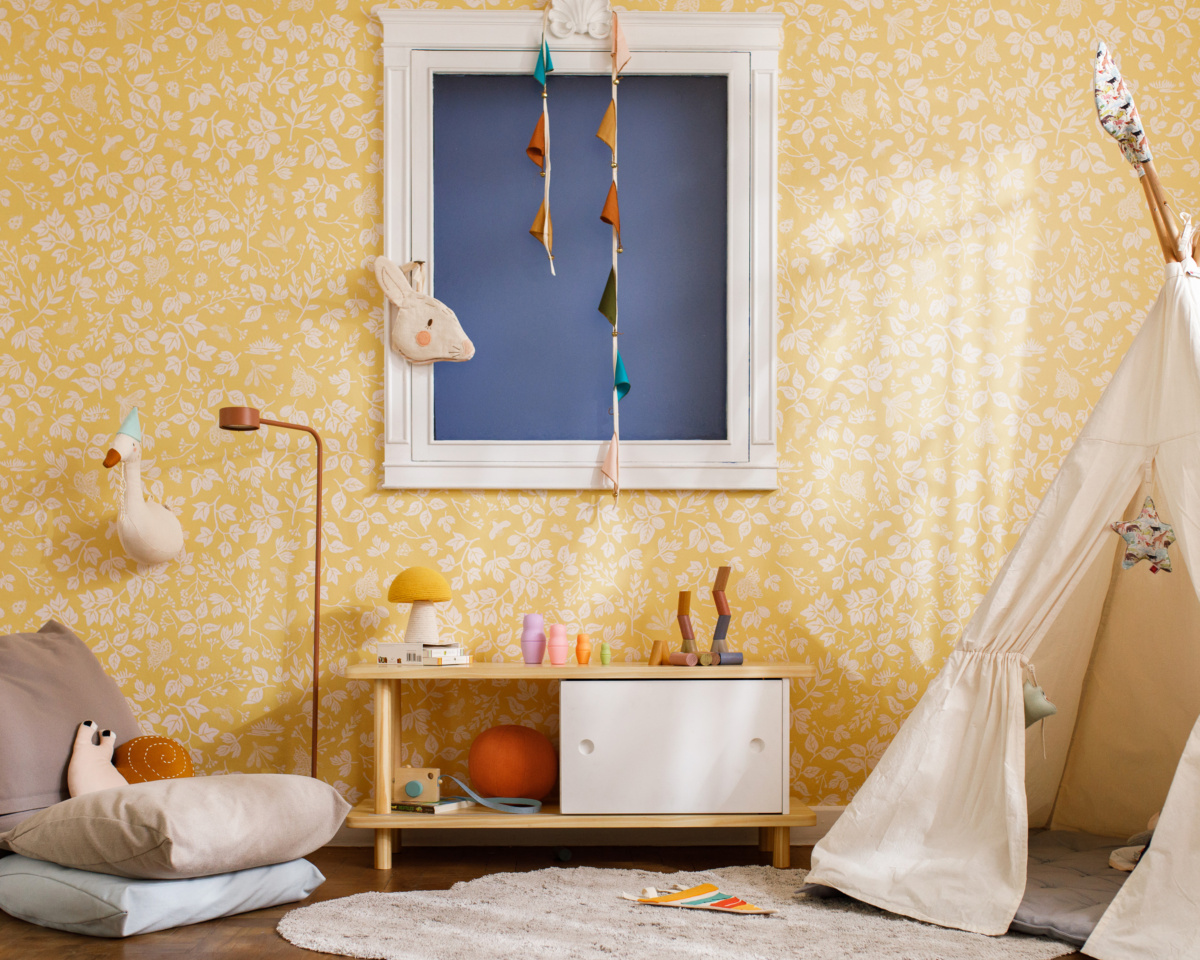
Nestig delivers a variety of products for children.
After choosing the right producers Maria says their in-house design team gets to work. “When creating nursery products, our design team is tuned into beauty, fun, and how to make them unique to Nestig.”
From these delightful cribs a garden of beautiful baby and toddler products have sprouted. Handcrafted mobiles, sweet and simple dressers, whimsical shelves, cuddle-worthy bedding, plush rugs, and themed décor—they now offer everything you need to outfit a new nursery (or refresh an old one). Nestig has even collaborated with fashion designer and “Queer Eye” star Tan France on a special collection reminiscent of his South Asian heritage. And they are designing new plush toys and nursery chairs. “Our inspiration comes from all around us, like an Aperol drink on the Amalfi Coast or the favorite game of a team member’s baby,” Maria says. “Our creatives see no boundaries, and we trust our guts and hearts.”
